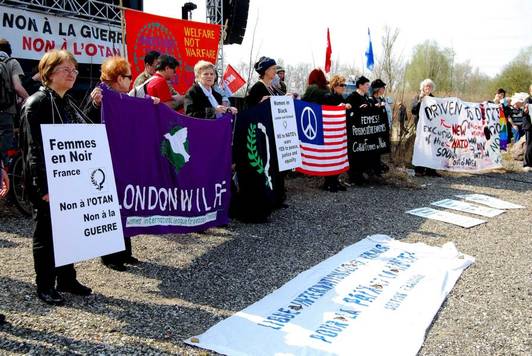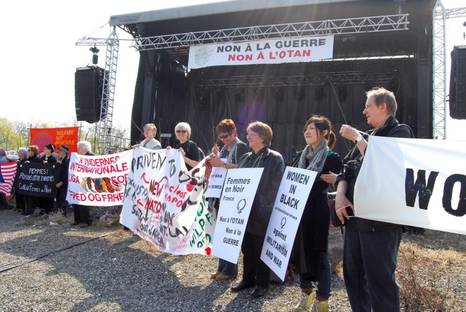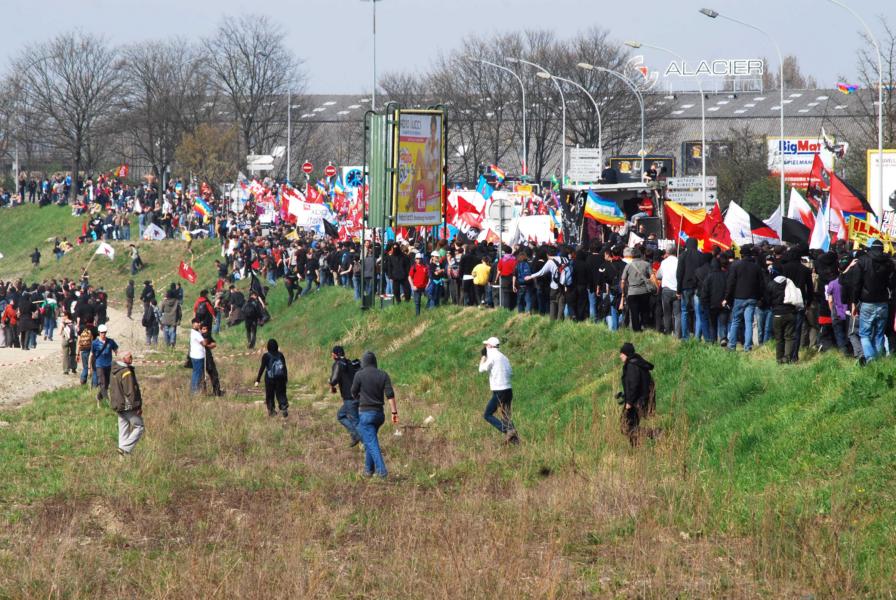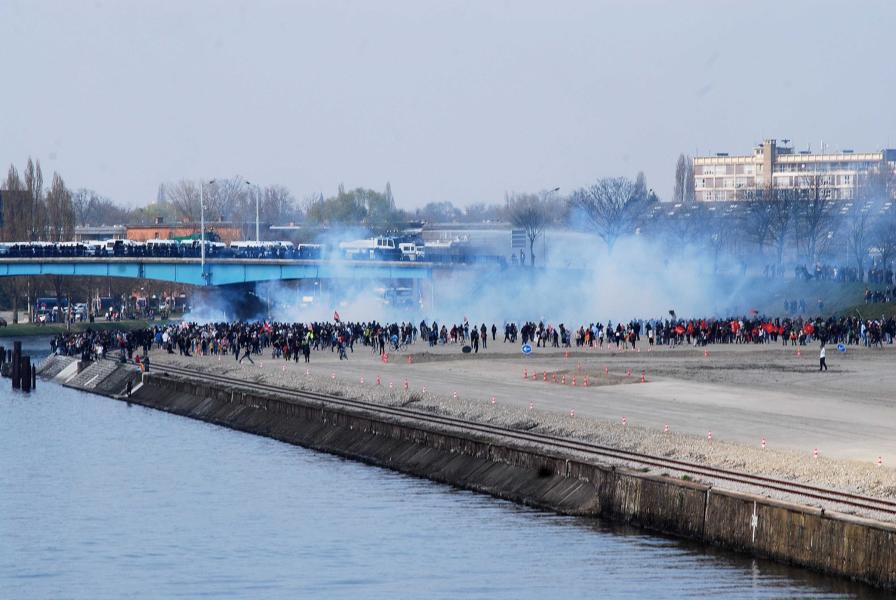Menu

Women say No to NATO: Strasbourg, France, April 2009
Cynthia Cockburn of Women in Black (London) has written a comprehensive summary of events in Strasbourg based on the personal evaluations of some of the women involved in the workshop, vigil and demonstration. Download her 23 page paper in pdf format (629 K) here: WOMEN SAY NO-TO-NATO: A ROUND-UP OF OUR INDIVIDUAL EVALUATIONS
On April 4th, 2009, the NATO military alliance turned 60, but it was not a happy birthday. Official celebrations with the heads of all NATO member states took place at the German-French border, in Strasbourg, France, and Kehl on the German side of the Rhine. Actions for peace and justice on this anniversary were organized by an international coalition (No to NATO).
International activists from the Women in Black (WiB) network and Women's International League for Peace and Freedom (WILPF), with help from Women and Life on Earth e.V., decided to participate. They prepared a workshop for the international congress and a vigil as part of the non-violent demonstration. This section documents their work, experiences and conclusions. We are also collecting background information on NATO.
'Security' for the official events was extreme, with opportunities for peaceful protest denied or greatly limited. The peace movement and local residents spent days in a massively militarized inner city that resembled an occupied zone. On the days of the conference and demonstration -- and NATO events -- public transportation was canceled, many streets and bridges were blocked. The police clashed with demonstrators before the major demonstration on Saturday, April 4th.
On April 4th some 6,000 German demonstrators were prevented from crossing a bridge into France to join the main protest, and held their own (peaceful) demonstration on the German side of the border. Meanwhile, French police stood by as violent youths dressed in black rioted and burned. For 40 minutes the police did not intervene, and then attacked the peaceful demonstration in force.
There has been a lot of commentary and discussion about the actions in Strasbourg, including the role of the state and police, organizers, demonstrators. See, for instance, Diana Johnstone's analysis: Ingredients for a Disaster: NATO, Strasbourg and the Black Block, 7 April 2009 (Counterpunch).
(c) Erika Sulzer-Kleinemeier
For use of, or for additional photos by Erika Sulzer-Kleinemeier, contact info(at)wloe.org




